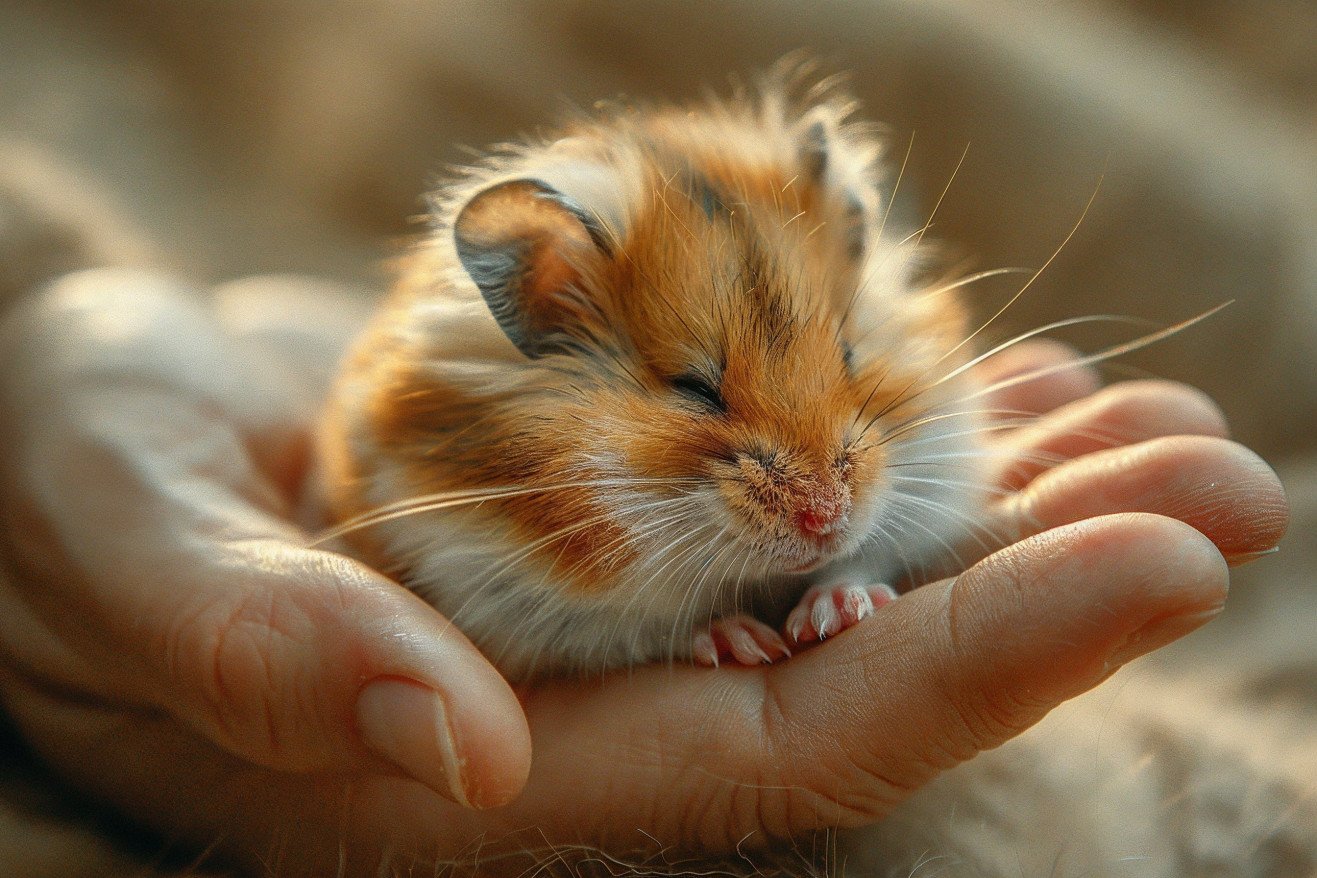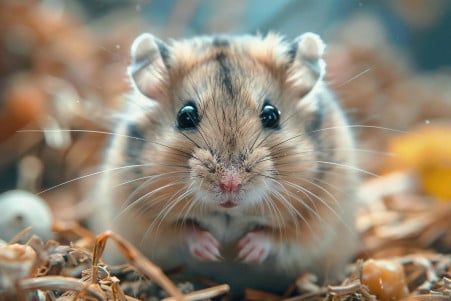Why Do Hamsters Die So Fast? Factors That Affect Lifespan
3 April 2024 • Updated 3 April 2024

Unfortunately, there are a number of reasons why these adorable animals often die before they reach old age, including stress, poor care, and health issues. Hamsters are known for their delicate nature, and some of the most common reasons for premature death include stress from loud noises or too much handling, especially in the first few weeks. In addition, poor diet, inadequate housing, diseases like wet tail, and genetic conditions are all common reasons why a hamster may die before its time.
Although it’s sad that hamsters don’t live longer lives, we’ll take a look at the most up-to-date information from vets, animal experts, and hamster enthusiasts to help you understand the most common reasons why hamsters die early. Armed with this information, you can make sure your pet has everything it needs to live a long, happy life.
What factors affect a hamster's lifespan?
Factors Affecting Hamster Lifespan
There are many reasons why hamsters die so easily. One of the most common is wet tail, a potentially fatal bacterial infection that is most common in young hamsters who are stressed and eating a poor diet. As one study notes, wet tail leads to dehydration due to diarrhea and can be fatal if not treated.
Injuries are another leading cause of premature death. Hamsters have thin skin and delicate bones that are easily injured by falls, fighting with other hamsters, and rough handling. Bite wounds from territorial disputes are also a common cause of premature death.
Failure to keep nails and teeth at a healthy length can also lead to premature death. Overgrown nails and teeth were responsible for 8.3% of hamster deaths in one large study. If nails and teeth grow too long, they can limit a hamster’s ability to move and eat.
Genetics are also a big factor. Inbreeding can lead to congenital defects and diseases, including heart disease. Even if a hamster isn’t inbred, they are prone to cancer, respiratory infections, organ failure, and other diseases that can lead to premature death, according to veterinary experts.
Because of their delicate nature and tendency to develop health problems due to stress, it’s important to make sure that hamsters are well cared for so that they can live as long as possible. This includes making sure that they live in an environment that isn’t stressful due to overcrowding and other factors that can lead to premature death.
Ensuring a Safe and Healthy Habitat for Hamsters
A safe, well-ventilated habitat with deep bedding and nesting materials is essential for a hamster's physical and emotional health. The Merck Veterinary Manual notes that hamsters do best in habitats with solid flooring, plenty of nesting material, and a minimum height of 6 inches to accommodate deep bedding. The Burgess Pet Care guide points out that it's also important to place the habitat away from direct sunlight, drafts, radiators, and high-frequency sounds that can stress hamsters.
Space to exercise, such as a wheel or play area, is also important for a hamster's physical and mental health. According to PetMe.social, exercise can help hamsters avoid obesity, maintain cardiovascular health, and keep their minds active. Regular bedding changes and a clean, dry environment can also help prevent health problems, according to veterinary professionals.
Providing hiding spots, chew toys, and other forms of enrichment can help hamsters feel more secure and express their natural behaviors. By making sure that a hamster's habitat is free of potential stressors, you can help ensure that your pet will live a long and healthy life. With the right care, hamsters can be happy and healthy pets.
Dietary Requirements and Feeding of Hamsters
To stay healthy, hamsters need a diet that includes a combination of high-quality pellets, fresh vegetables, and the occasional protein. According to Vet Help Direct, the foundation of a hamster's diet should be a nutritionally complete pellet food that's been formulated to meet their nutritional requirements. These pellets are important for helping to keep their teeth at a manageable length, which is especially important for rodents.
In addition to pellets, hamsters should be given small portions of fresh vegetables. The Merck Veterinary Manual suggests that hamsters be given about one teaspoon of vegetables each day and a small amount of fruit three times a week. Hamsters can also benefit from chewing on items like hay, wooden blocks, and cardboard to help keep their teeth healthy.
To avoid any issues with spoilage, make sure to remove any uneaten fresh food from your hamster's cage each day. And, of course, make sure that your hamster has access to fresh, clean water. According to PDSA, overfeeding and feeding your hamster the wrong type of food can lead to obesity and other health issues that can shorten your pet's life. So, make sure to feed your hamster a balanced diet that's appropriate for their species to help ensure that they stay healthy.
How to Spot and Treat Sickness in Hamsters
Spotting and treating sickness in hamsters is important for their health. Healthy hamsters will typically show signs of a good appetite, grooming, and active play. However, per BeChewy, common signs of sickness include a loss of appetite, lethargy, weight loss, a dirty or matted coat, hair loss, lumps, and labored breathing.
Many of the most common hamster health issues will need to be treated by a vet, including hair loss, diarrhea, wounds, tumors, and dental issues. If you notice any signs of distress in your hamster, wikiHow recommends seeking veterinary care, especially if it’s an emergency like paralysis or difficulty breathing.
A sick hamster’s recovery can be helped by providing a warm, stress-free environment and treating any underlying issues like respiratory, dental, and digestive problems. However, if a hamster is elderly or has a terminal illness, the goal should be to make them as comfortable and pain-free as possible and reduce their stress in their final days, per PawTracks. Staying on top of any changes and seeking veterinary care as soon as possible can help ensure that a hamster has the best chance of recovery or a comfortable end-of-life.
How to Help Your Hamster Live Longer
In addition to regular vet visits, which can help you keep an eye on your hamster's health and catch any potential issues early, it's important to be aware of the signs and symptoms of common health problems. The RSPCA notes that hamsters can suffer from a variety of diseases and tumors, so it's important to be aware of the potential issues. In addition, making sure that your hamster has a safe, enriched environment with the right housing, diet, and exercise can help prevent many of the most common health problems.
It's also important to make sure that you're providing responsible care, which includes making sure that you have a plan in place for who will care for your hamster if you go out of town. According to the RSPCA, this means making sure that your hamster stays in their own cage and has their regular food while you're gone. Pet insurance can also help ensure that you can afford any unexpected vet bills and that your hamster gets the care that they need.
Finally, making sure that you handle your hamster properly and make sure that they're not stressed, especially in the first few weeks, can help ensure that they live a long and healthy life. According to Healthy-Pet.com, this means making sure that your hamster isn't exposed to drafts and that you use a high-quality, dust-free bedding like Carefresh® to help prevent many common medical problems. By following these tips, pet owners can help make sure that their pets are as healthy as possible.
Conclusion: How to Give Your Hamster the Best Life
Hamsters may not live very long, but with the right care, their lives can be both longer and better. It's important to know the most common reasons for premature death and make sure that you're taking steps to prevent them. This includes making sure that you're providing the best possible living conditions, diet, and stress levels for your hamster.
In addition, regular vet visits, good pet ownership, and preventive care can all help to make sure that your hamster lives as long as possible. By making sure that you're doing everything you can to keep them healthy and happy, you can make sure that your hamster has the best life possible.


